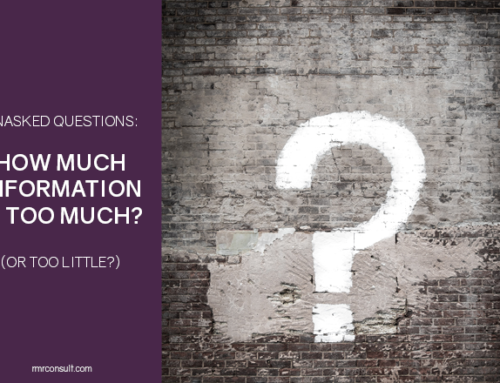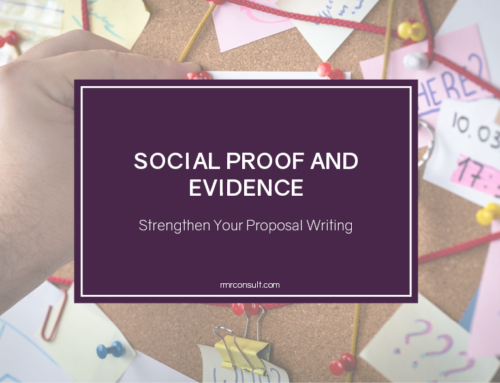Problem statement versus win theme: The clear winner in proposal strategy development
One of the first things we need to do after a proposal is greenlit is to decide on the messaging strategy we plan to use. This strategy is your win theme, and it helps you sell your firm with an engaging proposal story. Win themes are powerful proposal tools, but they can be tricky to articulate. If your proposal is feeling lackluster or directionless, or if you’re struggling to unite your proposal team, you may be working with an unclear or weak strategy. If you have tried to articulate your win theme but still seem to struggle with the aforementioned issues, then you might have come up with a problem statement, rather than a win theme. Problem statements can be important messaging tools, but we need a little more than problem/solution thinking to help us pull together all of the pieces of a responsive proposal.
What is a problem statement?
Basic problem statements identify an issue and present a solution to that issue. An example of this might be: the window is broken (problem) so we will replace it (solution). There is nothing inherently wrong with a problem statement on its own – in fact, it’s a great idea to be thinking about potential client challenges and solutions in your proposal – but if you limit yourself to only problem/solution thinking in your proposal, you’re going to run into issues with depth and consistency.
Let’s look at another example. Say you are proposing on a project with an incredibly tight schedule. Articulated as a problem statement, you might be tempted to be satisfied with something like ‘The schedule is tight (problem) so we will add team members to expedite it (solution).’
The first issue we run into here is depth. You’re adding team members, which is a good start, but what does that mean? That you have adequate staff to devote extra personnel resources to the project for its duration? That you have consultant team members you can bring on to accelerate an aspect of the project? That you’re willing to hire additional staff specifically for this project? You might know the answer, having come up with the solution, but you run the risk of not clearly articulating it to the client if you don’t articulate it for yourself first.
The second issue you may run into is cohesion throughout your proposal. How do you tie all of the required elements of the RFP into this problem statement? Will all of your resumes focus on speed skills? Will all of your related projects have condensed schedules? That’s an okay start, but it might set you up for a common issue in proposal messaging: failure to connect with the client.
It isn’t enough to simply identify a problem and present a solution. All of your competitors are doing something similar, and chances are you might be proposing the same solutions. So what makes you stand out? The connection you make with the client by presenting them with a specific benefit for choosing your solution over the others can put you above the rest.
Why win themes are superior proposal strategies
Win themes are comprised of an understanding of the client’s challenges, a presentation of the features your business offers that can overcome or solve these challenges, a problem-solving benefit the client will receive from selecting you over the competition, and social proof supporting your ability to deliver said benefit. These last two elements – the problem-solving benefit and the social proof – are what make a win theme superior to a problem statement.
By understanding the benefit a client will receive for choosing your firm over the competition and identifying the social proof you have to offer as evidence of your abilities, your win theme encourages you to dig deeper into your resources, abilities, and understanding of the client challenge. This makes it easier to link the various sections of your proposal. The projects and references you present will provide clear evidence of your history of success with similar issues. You’ll want to reference these and emphasize the benefits those past clients received, throughout your proposal. This could appear in quotes from past clients, resumes that focus on a person’s specific role in a past similar project, and specific examples of similar steps taken in your project approach.
When do you need a problem statement?
Problem statements do have their place in proposals, so if this is where you started, don’t trash the idea. You can expand your problem statement into a win theme by layering in the benefit and evidence of past success. You can also use your problem statement in a technical approach. This section might require a scaled-back version of your win theme that’s more straightforward. Use your problem statement to show the client that you understand their challenges and provide precise solutions for overcoming them. If you need help writing an effective problem statement, check out this article from iSixSigma or this one from Ceptara.
When do you need a win theme?
Any time you write a proposal, you need a guiding strategy. That strategy is your win theme.
Win themes have the power to transform your proposal into something the client wants to engage with, rather than passively skim through. With a good theme, you have the ability to deliver the important message of how you, and only you, can provide the solutions the client needs.
Your turn – problem statement, or win theme? Which do you use and how?






Leave A Comment